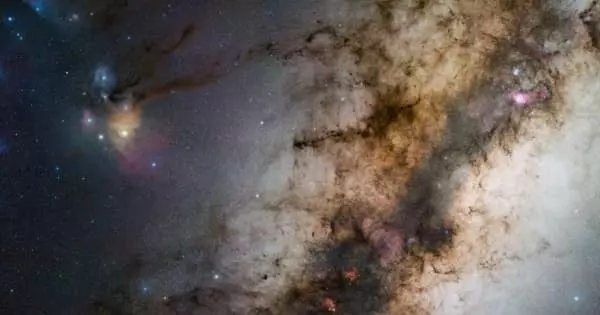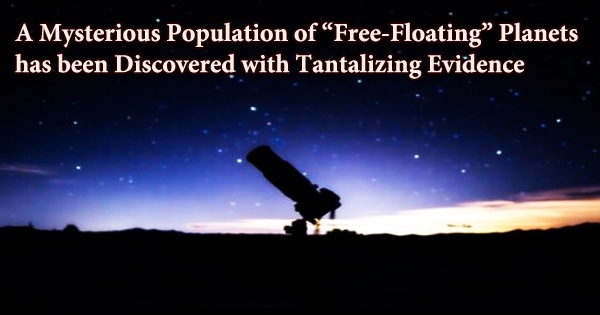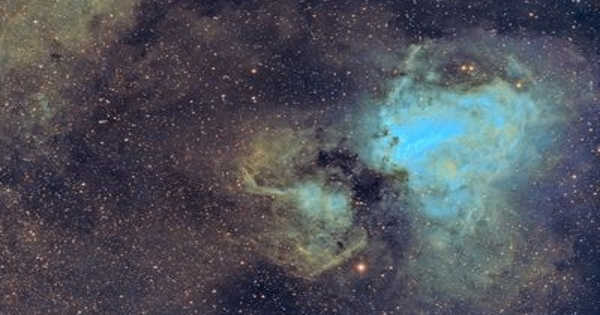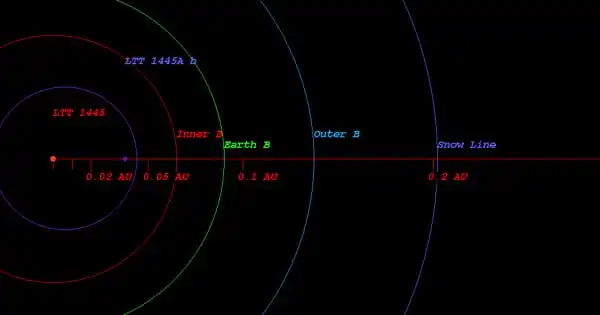Dark matter is a hypothetical type of matter that is thought to account for approximately 85 percent of all matter in the universe. Its presence is implied in a number of astrophysical observations, including gravitational effects that cannot be explained by accepted gravity theories unless more matter is present than can be seen. As a result, most scientists believe that dark matter is abundant in the universe and has had a significant impact on its structure and evolution.
Dark matter, the invisible stuff whose gravity is thought to hold galaxies together, may be the least satisfying concept in physics. Despite taking detailed measurements with state-of-the-art telescopes over the course of forty hours, astronomers found no evidence of dark matter in the galaxy AGC 114905.
Despite taking detailed measurements with state-of-the-art telescopes over the course of forty hours, an international team of astronomers led by researchers from the Netherlands found no evidence of dark matter in the galaxy AGC 114905. They will publish their findings in the Royal Astronomical Society’s Monthly Notices.
Of course, this is what we expected and hoped for because it confirms our previous measurements. However, the theory predicts that there must be dark matter in AGC 114905, but our observations show that there isn’t. In fact, the gap between theory and observation is growing wider.
Pavel Mancera Pia
When Pavel Mancera Pia (University of Groningen and ASTRON, Netherlands) and his colleagues discovered six galaxies with little to no dark matter, they were told to “measure again, you’ll see that there will be dark matter around your galaxy.” However, after forty hours of detailed observations with the Very Large Array (VLA) in New Mexico (United States), the evidence for a dark matter-free galaxy became even stronger.
AGC 114905, the galaxy in question, is approximately 250 million light-years away. It is classified as an ultra-diffuse dwarf galaxy, with the term “dwarf galaxy” referring to its brightness rather than its size. The galaxy is roughly the size of our own Milky Way but has a thousand times fewer stars. The widely held belief is that all galaxies, and especially ultra-diffuse dwarf galaxies, can exist only if they are held together by dark matter.
The researchers used the VLA telescope to collect data on the rotation of gas in AGC 114905 for 40 hours between July and October 2020. They then created a graph with the distance of the gas from the galaxy’s center on the x-axis and the rotation speed of the gas on the y-axis. This is a common method for detecting the presence of dark matter. The graph shows that the motions of the gas in AGC 114905 can be completely explained by just normal matter.
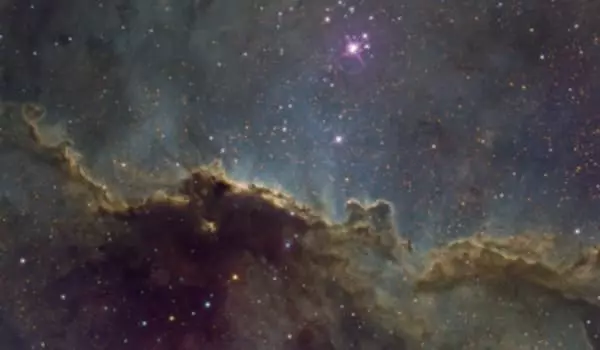
“Of course, this is what we expected and hoped for because it confirms our previous measurements,” says Pavel Mancera Pia. “However, the theory predicts that there must be dark matter in AGC 114905, but our observations show that there isn’t. In fact, the gap between theory and observation is growing wider.”
The researchers list the possible explanations for the lack of dark matter one by one in their scientific publications. Large nearby galaxies, for example, could have stripped AGC 114905 of dark matter. Pia Mancera: “But there aren’t any. And, in the most well-known framework for galaxy formation, the so-called cold dark matter model, we would have to introduce extreme parameter values that are far outside the normal range. We also cannot reproduce the motions of the gas within the galaxy using modified Newtonian dynamics, an alternative theory to cold dark matter.”
According to the prevailing theory among cosmologists, dark matter pervades almost every galaxy, providing the extra gravity that prevents stars from swirling out into space at the speeds at which astronomers see the galaxies rotating. A vast web of the stuff’s clumps and strands served as the scaffolding upon which the universe grew. Despite decades of effort, physicists have yet to detect particles of dark matter floating around, and many would happily dismiss the idea if it didn’t work so well.
One more assumption, according to the researchers, could change their conclusions. That is the approximate angle from which they believe they are viewing the galaxy. “However, that angle has to deviate significantly from our estimate before there is room for dark matter again,” co-author Tom Oosterloo says (ASTRON).
Meanwhile, the researchers are delving into a second ultra-diffuse dwarf galaxy. If no evidence of dark matter is found in that galaxy again, the case for dark matter-poor galaxies becomes even stronger.
